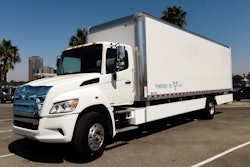Walking the tightrope between cost-cutting and safety/operational efficiency is part of life as a fleet manager, but with the pandemic wreaking havoc on revenues through lost working days and supply chain disruptions, reducing operational costs has assumed critical significance.
There are numerous overheads in this line of work. The most prominent ones that spring to mind are fuel charges and asset maintenance costs. The good news is that they all offer different ways to optimize and cut down on operational expenses, albeit with varying levels of utility.
Here are five steps for fleet managers looking to reduce operation costs, each graded on a scale of 1 to 5 for their potential impact on your overhead:
This should be your first port of call if you need to cut down on operating costs. After all, each additional vehicle adds thousands of dollars in total ownership costs each year, according to KPMG. Downsizing by even a few older models has the potential to attract big savings in terms of mileage, maintenance and driver expenses.
Of course, there is a trade-off involved here. Fewer vehicles mean more load on the rest of your fleet and a marginal increase in operating costs, but the net impact will remain largely positive, with fleet managers often reporting between 5% and 15% total cost reduction.
A major caveat here is that decisions about fleet size reductions are often beyond the remit of fleet managers. But you can still influence by managing "surplus" vehicles that often tend to accumulate in even medium-sized fleets, due to driver terminations, expansion, acquisitions, etc.
Rating: 4/5










